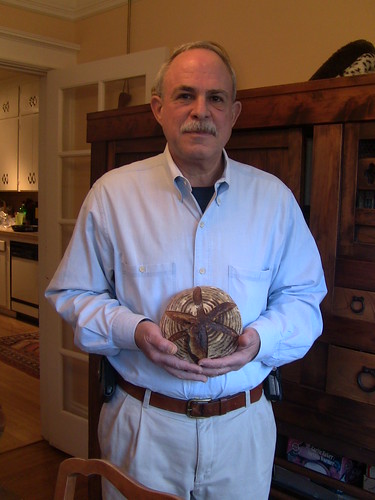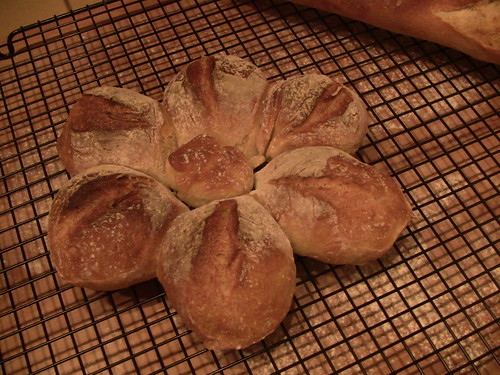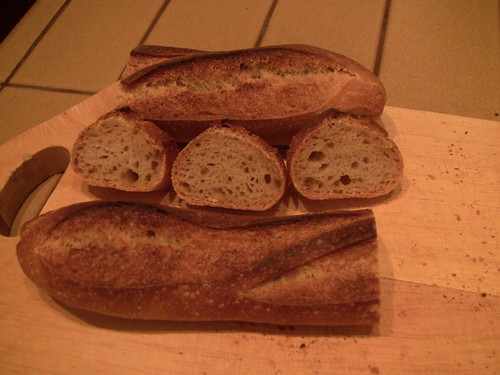Me and My Mini-Miche.
I generally follow trends slavishly, but I can’t get into the nine-pound-miche thing that seems to have taken TFL by storm. In fact my one and only complaint about miches is they are too large for my small (albeit voracious) family of only two carbovores. I know they can be divided and a piece frozen, but they’re never as good thawed as fresh.




